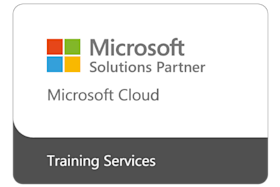Course subjects
Module 1: Tool Design
This module explains how to design tools and units of automation that comply with native PowerShell usage patterns.
Lessons
Tools do one thing
Tools are flexible
Tools look native
Lab 1: Designing a Tool
Module 2: Start with a Command
This module explains how to start the scripting process by beginning in the interactive shell console.
Lessons
Lab 1: Designing a Tool
Module 3: Build a Basic Function and Module
This module explains how to build a basic function and module, using commands already experimented with in the shell.
Lessons
Lab 1: Designing a Tool
Module 4: Adding CmdletBinding and Parameterising
This module explains how to extend the functionality of a tool, parameterise input values, and use CmdletBinding.
Lessons
Lab 1: Designing a Tool
Module 5: Emitting Objects as Output
This module explains how to create tools that produce custom objects as output.
Lessons
Lab 1: Designing a Tool
Module 6: An Interlude: Changing Your Approach
This module explains how to re-think tool design, using concrete examples of how it’s often done wrong.
Lessons
Examining a script
Critiquing a script
Revising the script
Module 7: Using Verbose, Warning, and Informational Output
This module explains how to use additional output pipelines for better script behaviors.
Lessons
Lab 1: Designing a Tool
Module 8: Comment-Based Help
This module explains how to add comment-based help to tools.
Lessons
Lab 1: Designing a Tool
Module 9: Handling Errors
This module explains how to create tools that deal with anticipated errors.
Lessons
Understanding errors and exceptions
Bad handling
Two reasons for exception handling
Handling exceptions in our tool
Capturing the actual exception
Handling exceptions for non-commands
Going further with exception handling
Deprecated exception handling
Lab 1: Designing a Tool
Module 10: Basic Debugging
This module explains how to use native PowerShell script debugging tools.
Lessons
Lab 1: Designing a Tool
Module 11: Going Deeper with Parameters
This module explains how to further define parameter attributes in a PowerShell command.
Lessons
Module 12: Writing Full Help
This module explains how to create external help for a command.
Lessons
Lab 1: Designing a Tool
Module 13: Unit Testing Your Code
This module explains how to use Pester to perform basic unit testing.
Lessons
Lab 1: Designing a Tool
Module 14: Extending Output Types
This module explains how to extend objects with additional capabilities.
Lessons
Module 15: Analysing Your Script
This module explains how to use Script Analyser to support best practices and prevent common problems.
Lessons
Lab 1: Designing a Tool
Module 16: Publishing Your Tools
This module explains how to publish tools to public and private repositories.
Lessons
Lab 1: Designing a Tool
Module 17: Basic Controllers: Automation Scripts and Menus
This module explains how to create controller scripts that put tools to use.
Lessons
Lab 1: Designing a Tool
Module 18: Proxy Functions
This module explains how to create and use proxy functions.
Lessons
Lab 1: Designing a Tool
Module 19: Working with XML Data
This module explains how to work with XML data in PowerShell.
Lessons
Lab 1: Designing a Tool
Module 20: Working with JSON Data
This module explains how to using JSON data in PowerShell.
Lessons
Converting to JSON
Converting from JSON
Lab 1: Designing a Tool
Module 21: Working with SQL Server Data
This module explains how to use SQL Server from within a PowerShell script.
Lessons
SQL Server terminology and facts
Connecting to the server and database
Writing a query
Running a query
Invoke-SqlCmd
Thinking about tool design patterns
Module 22: Final Exam
This module provides a chance for students to use everything they have learned in this course within a practical example.
Lessons
Lab problem
Break down the problem
Do the design
Test the commands
Code the tool
Lab 1: Final Exam
Lab 2: Final Exam


